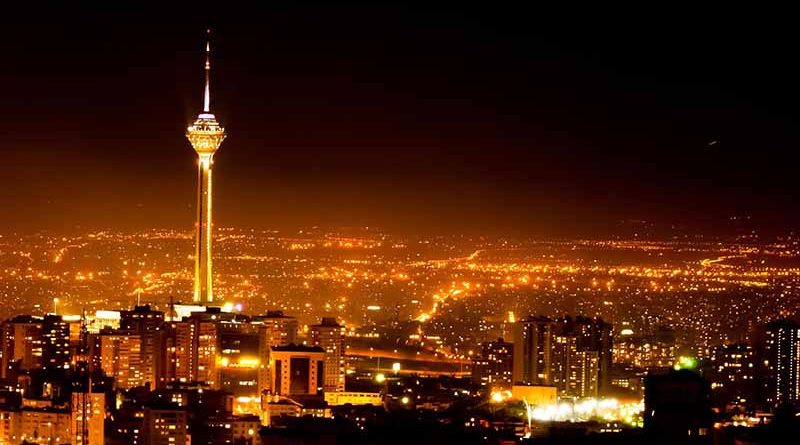Sa’dabad complex:
The Sa’dabad Complex built by the Qajar and Pahlavi monarchs, located in Shemiran, Tehran, Iran.
The complex includes more than 180 hectares of natural forest, palaces, qanats, galleries, street, and museums.
History:
The complex was first built and inhabited by Qajar monarchs in the 19th century. After the 1979 Revolution, the complex became a museum and galleries too.
Present use:
These days parts of the complex are museums, which people can visit them. The complex is operated by the Cultural Heritage Organization of Iran which is responsible for most of the tourist attraction, museum, cultural aspects, and galleries of the country.
Gates to the complex:
– Nezamie Gate
– Gate of Darband Street
– Gate of Darband Square
– Ja’far Abad Gate (1st)
– Ja’far Abad Gate (2nd)
– River Gate
– The White House Gate
– Zaferanie Gate
Main building:
– House of Ahmad Shah Qajar
– The Green House
– The Mellat Museum
– Museum of Natural History
– Museum of Fine Arts
– The Black House
– Museum of Anthropology
– Museum of Glassware and Handicrafts
– Building of Amendment 36 (a governmental agency)
– House of the Mother Queen
– House of Ahmad Reza, the son of Reza Shah
– Administration of the complex
– The Training Center
– The Military Museum
– Museum of Artistic Creatures
– The Behzad Museum
– Museum of Treasure (The Dafine Museum)
– Museum of Mir Emad Calligraphy
– The Abkar Museum
Ahmad Shahi Palace:
This palace is the oldest palace in Sa’dabad, which was built at the end of the reign of Ahmad Shah Qajar. After the revolution, the building was used as the base of the Basij mobilization of Tehran province siblings. The building was reconstructed and ready for a public visit after recapturing of the mobilization of the sisters.
Green Palace:
The Green Palace is one of the most beautiful royal palaces in Iran, located at a high point in the northwest of Saadabad. The palace was originally a half-finished building that belonged to Ali Khan, and the hill where the building was located was named after that name. After building this palace on this hill, Reza Shah built the current palace and completed its work from the time of the war ministry until the early days of its reign (from 1301 to 1307 solar years). Finally, with the efforts of Iranian artists and architects, the palace was built in seven floors (underground and ground) after seven years of work. Reza Shah was used on the ground floor as a place of residence and office, and from the basement as a storage room. Also, a magnificent dining hall with tables and sculptures and carved sandals, as well as fine porcelain, ceramic and Italian silverware was used for catering the ritual of the guests. This palace is also known as the stone palace of the marble palace, due to the use of rare minerals of Khamseh Zanjan mine and Khorasan marble. Mortar rocks are lead and prevent them from breaking through expansion and contraction. The main door of the palace opens from the northwest towards the Alborz high mountain range. The head and entrance columns of the palace are also made of marble in Khorasan and a combination of motifs and illumination of Iranian and European art. After renovating and restoration of the palace, the stone palace became known as the Shah Palace, and after the Iranian Revolution, it was renamed the Green Palace. The adornments and delicate finishes of the palace are unknown to the work of the Iranian artists. Illumination of the walls are the work of Professor Hossein Behzad and Khatam Karhi are the result of the workshop of Professor Mirza. One of the most beautiful parts of this palace, the mirror room. On all mirrors are decorated with flowers of gypsum and covered with beautiful Mashhad carpet, which is the work of Abdolmohammad Amuoghli.
White Palace (Palace of the Nation):
The White Palace is the largest palace in the 110-hectare ensemble of Sa’dabad. Its construction was begun in 1931 and finished in 1936. Many artists and artisans had been worked to build this palace. The modern building is filled with paintings, extravagant furnishings, a tiger pelt and immense made-to-measure carpets. It was the top of luxury in its day. In the upstairs, Ceremony Hall has the carpet that is said to be one of the largest ever woven in Iran. There are two bronze boots outside are all that remain from the past.
Other Museums & Art Galleries:
List of museums for visiting:
Fine Arts Museum:
The major part of the paintings in this collection are the oil paintings of Safavieh, Afshar, Zand, and Qajar periods. The paintings have been arranged on 3 floors:
1) First floor, teahouse painting by contemporary Iranian artists
2) Second floor, different historical periods paintings mentioned above
3) Third floor, European works.
Behzad Museum:
This museum is appreciated to the miniatures painted by Ostad Hossein Behzad. Studying European art and being inspired by Kamal ud-Din Behzad and Reza Abbasi, he presented a new style of a miniature on paper, hard paper or fiberboard. This style is purely Iranian.
Abkar Museum:
The miniatures in this museum are works of a 20th-century artist called Klara Abkar who had her specific style of painting. surprisingly, her source of inspiration in painting was the rich Iranian literature and mysticism. Her works draw the attention of the visitors to a world of spirituality and a poem-like or light-music-like harmony that present everyone’s eyes peace and tranquility.
Museum of Anthropology:
The Iranians’ lifestyle and customs of through the history are showed from the cultural perspective. In a large area of two floors, various objects are exhibited like tools for irrigation, husbandry, agriculture, hunting and fishing as well as agricultural documents, lighting tools, clothes, and handicrafts.
Water Museum:
There is the exhibition of ancient traditional techniques, instruments for water supplement and distribution and some ancient water dams are presented in this museum.
Military Museum:
The objects of the museum are declared on two floors, containing military uniforms of Achaemenians up to the present time as well as part of the history of Iraqi-imposed war against Iran (1980-1988) is also exposed to visitors.

